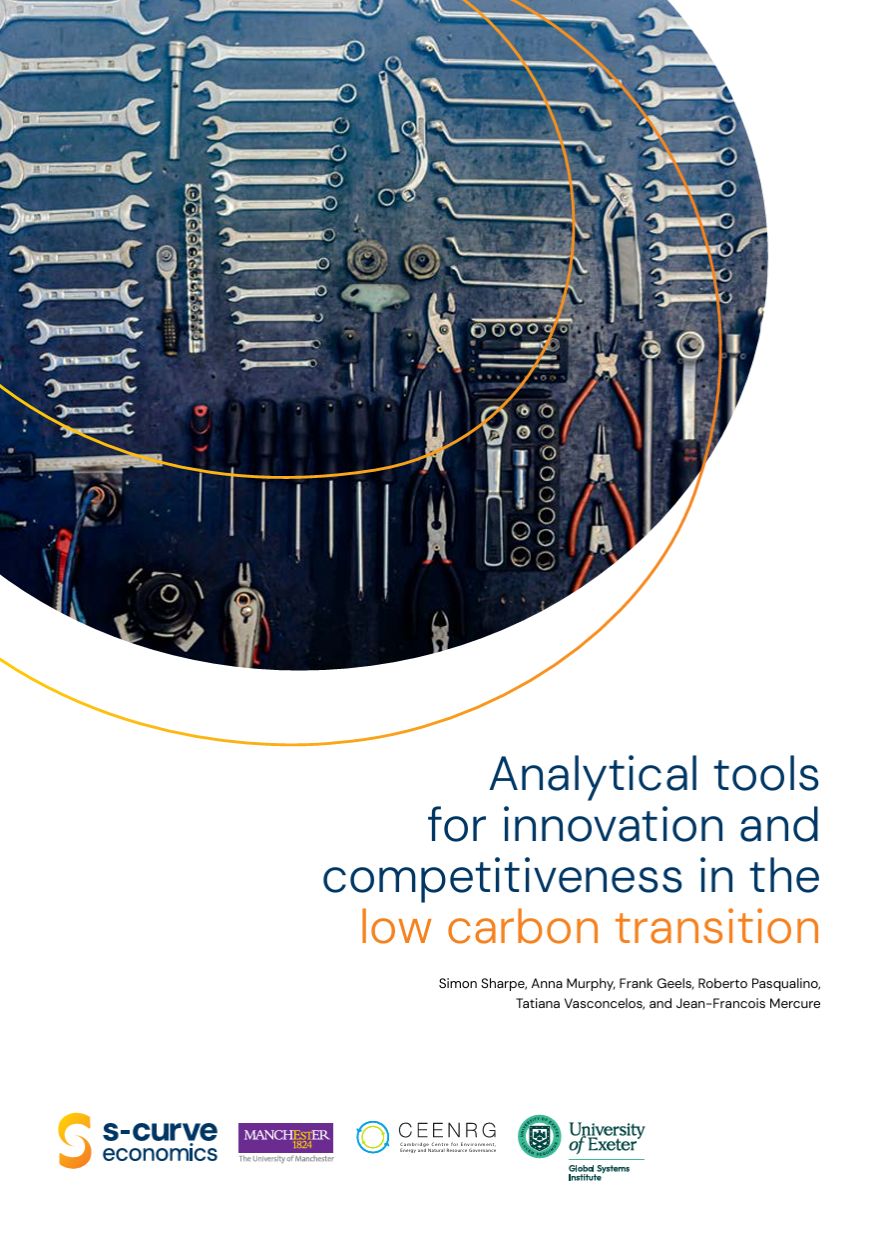Simon Sharpe, Anna Murphy, Frank Geels, Roberto Pasqualino, Tatiana Vasconcelos, and Jean-Francois Mercure
February 2025
How can economic analysis help governments respond more effectively to the challenges and opportunities of the low-carbon transition? This report sets out a suite of conceptual frameworks, decision-making tools and economic models that governments can use to inform policy decisions relating to innovation, competitiveness and economic transformation in the context of the low-carbon transition.
It explains how the analytical tools with which governments are most familiar can miss important dynamics of the transition, and outlines an emerging set of methods that may be more appropriate for this context.
Frameworks and tools discussed in the report include innovation-driven industrial strategy, risk-opportunity analysis, probabilistic clean technology cost forecasts based on learning curves, systems mapping, system dynamics models, agent-based models, economic complexity analysis, and disequilibrium macroeconomic models. The report illustrates how different analytical methods can lead to contrasting policy conclusions, and includes case studies on the use of analytical tools in Brazil, Denmark, Georgia, South Africa, Czechia and Angola. The report also recommends priorities for knowledge-sharing and capacity building on analytical methods within governments.

